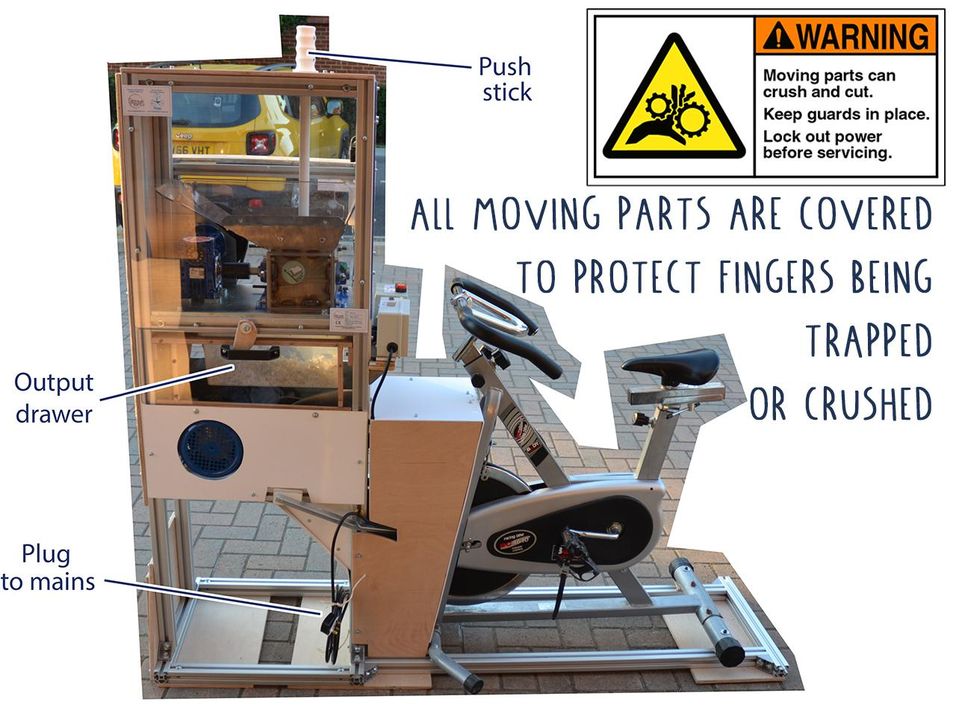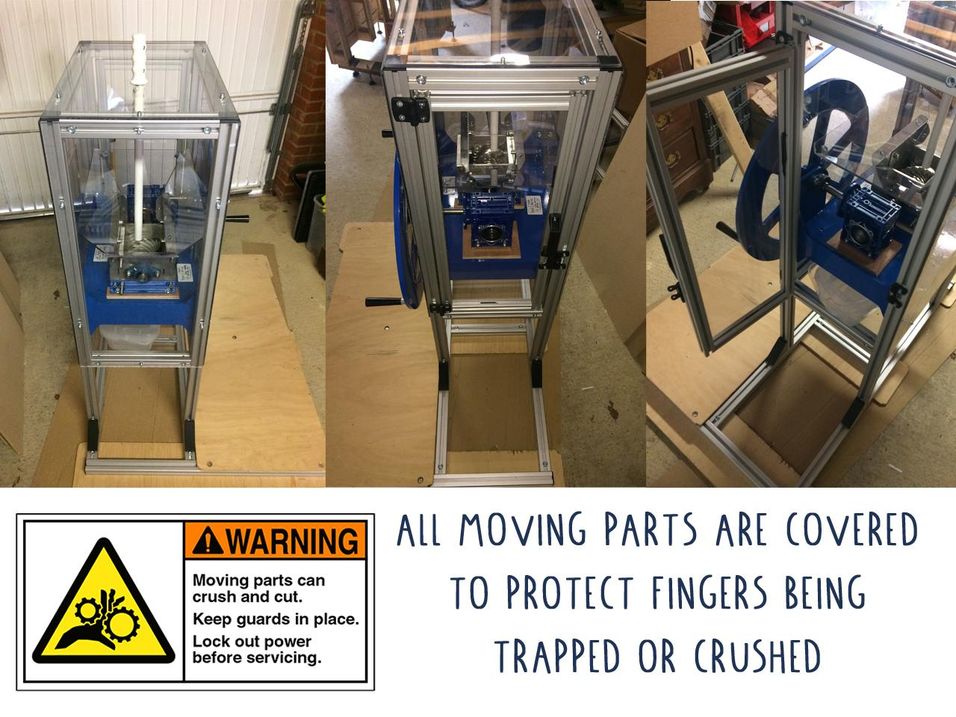Human powered shredder
The Precious Plastic machines are open source, which means you can adapt it to your requirements. So if you don't have or don't want to use a motor, there are other more 'humane' ways to power the shredder!researchshredderhack
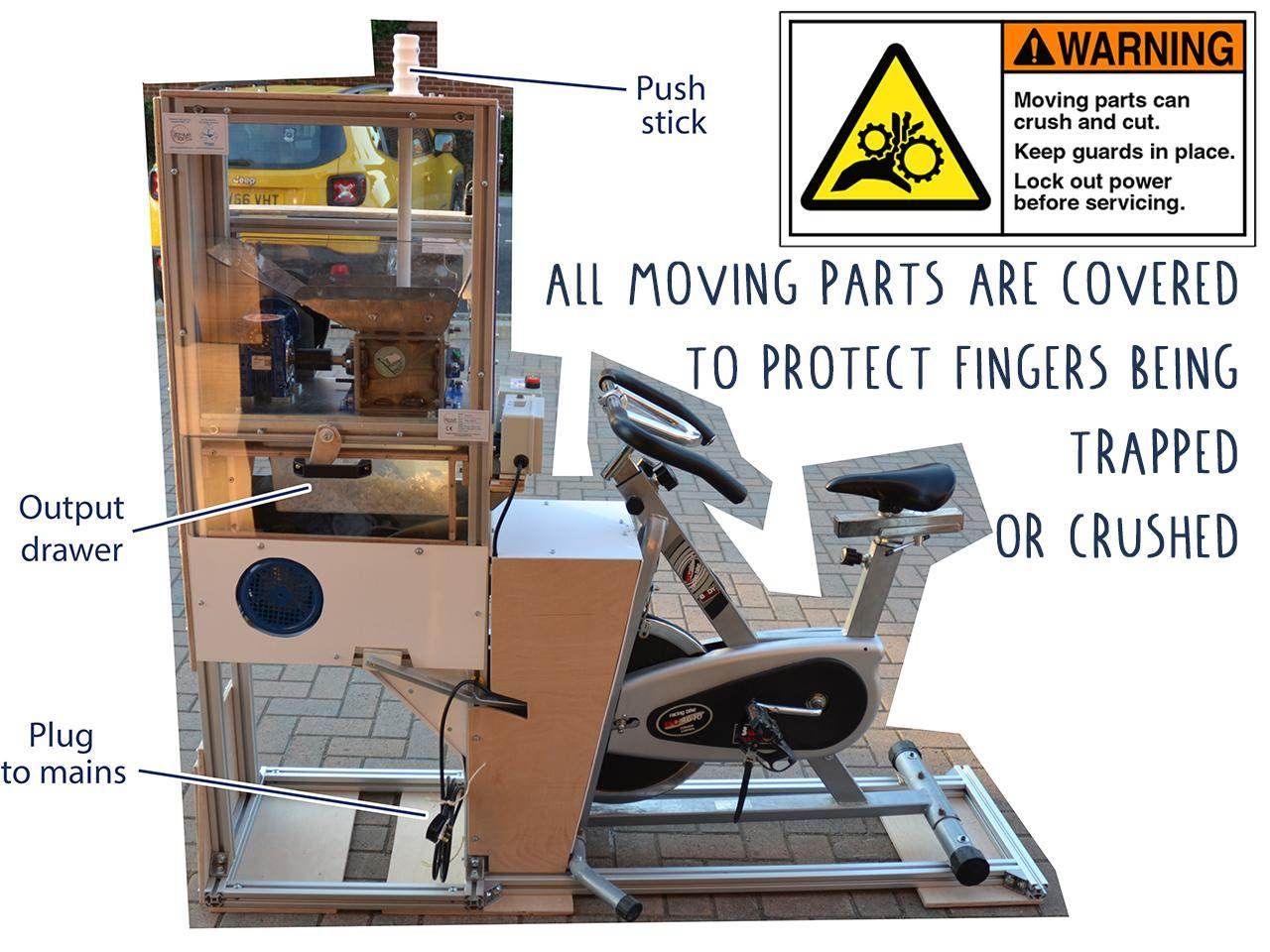
More Information
1
Disclaimer
Before we start, let us mention that this guide is supposed to be informative, only for you to be inspired about the possibilities of machine design.
We're not responsible for the design or (mal)functioning of your machine, please seek professional help when needed.
Always follow safety recommendations and practices when building machinery and using tools.
Design, build and hack this machine at your own risk!
The pictures and 3D models in this guide are from particular one-off designs, not to be taken literally as they may not make sense for your requirements.
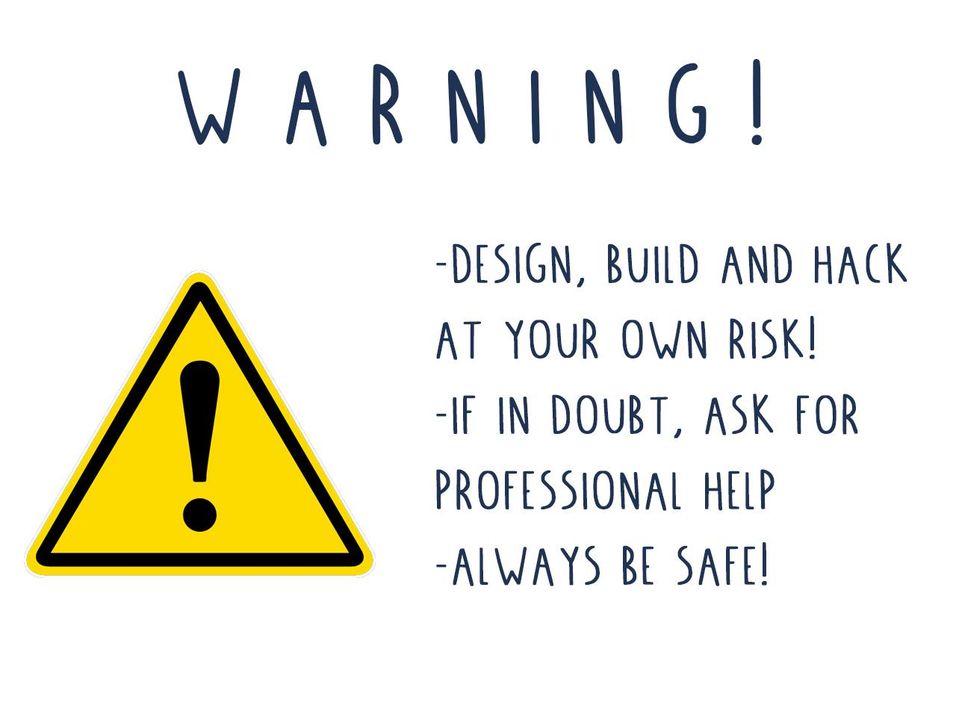
2
User Requirement Specifications
Or URS for short is just a fancy way of saying 'identify and define the characteristics of what you want to make'. In other words, before you build the machine, these decisions will have an influence in the design:
- How to power it. You can use a motor (single phase or three phase?), human power (hand-cranked or pedal powered?), animal power (a little hamster in a wheel?), other natural source of energy (wind or hydro power? nuclear? dark matter?)
- How much use it's going to get. If you plan on using it once a month, perhaps it makes sense to keep it cheap and simple (hand cranked power). If you plan to use it for a few hours a day, you might want something other than your arms to power it.
- What materials do you have available? If you have a salvaged motor maybe it can be adapted. Or if you have an exercise bike that you don't use anymore, you have half the work done for you.
- What skills and processes do you have available? If you can weld, the standard design of the machines would work for you. If like me, you can't, you'll have to outsource the task to someone else (which can cost you more than you'd like) or redesign it.
- Is it going to be used off-grid? If access to electricity is difficult then that's going to drive the design to a non-electric one.
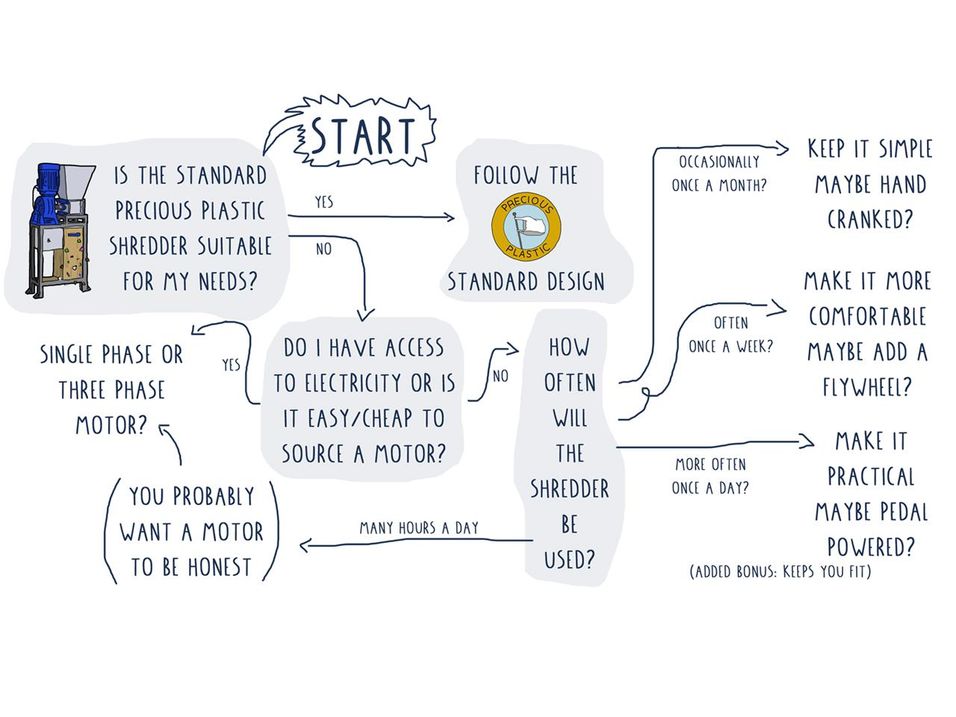
3
To weld or not to weld
If you can't weld steel, or don't have access to it, there are other techniques that you can use for the frame:
- Steel sections can be fastened with nuts and bolts. You save the welding time, but need to drill holes instead.
- You can use aluminium extrusion T-slot profiles instead, which are easy to bolt and work with.
- Be careful if you use wood as an structural element. Some parts of the shredder may be subject to strong forces that wood may not resist.
As for the shredder itself, it can be modified so that it doesn't need welding, but would require a different technique: precision engineering (holes and dimensions need to be very accurate and perfectly square)
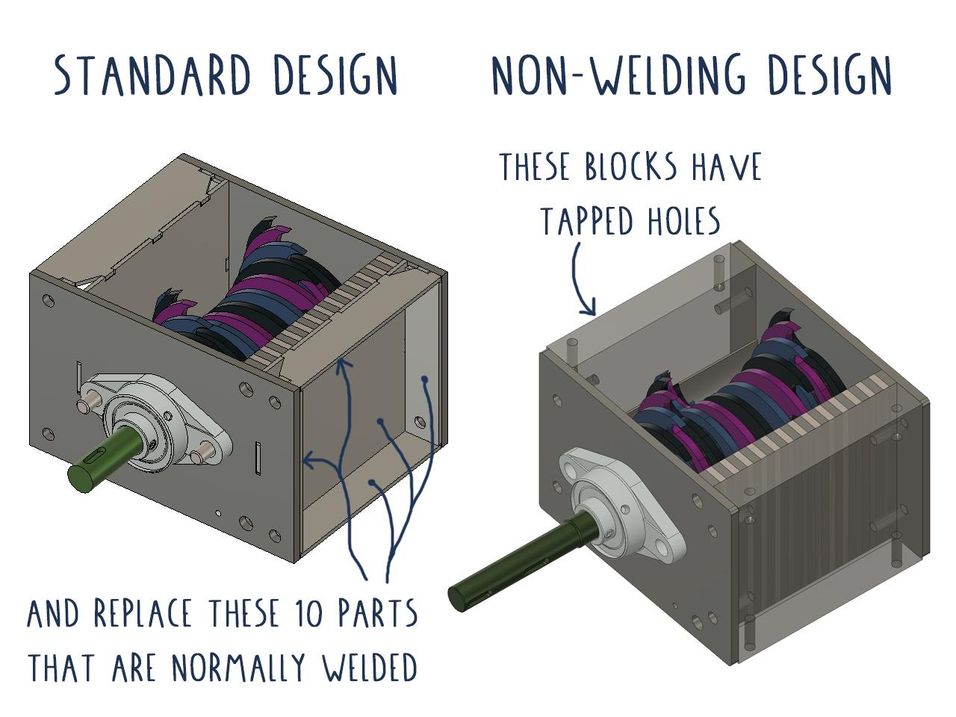

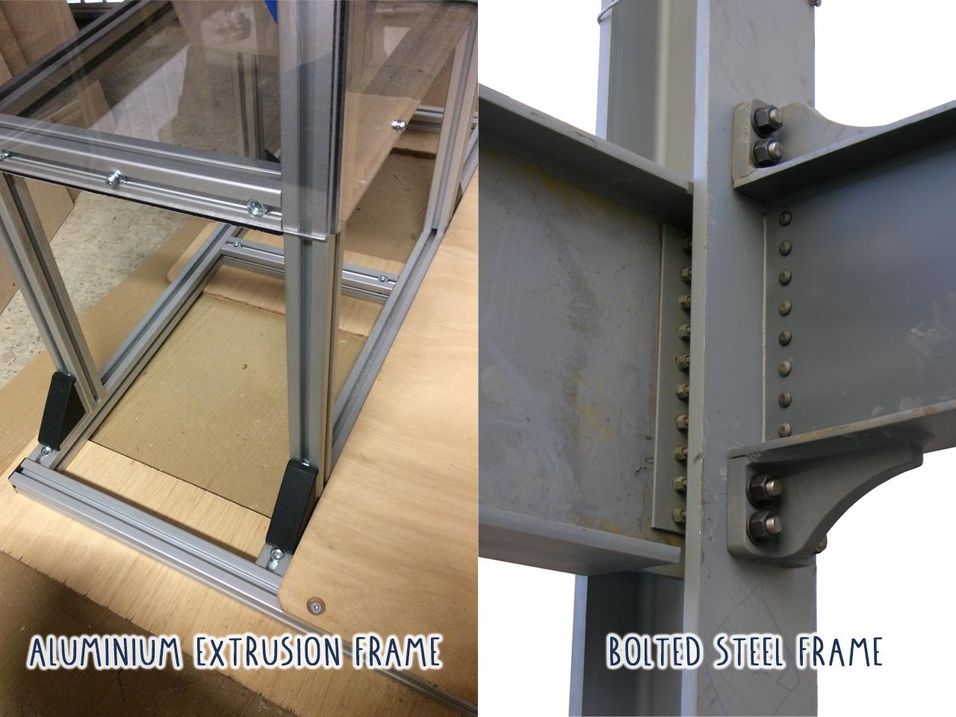
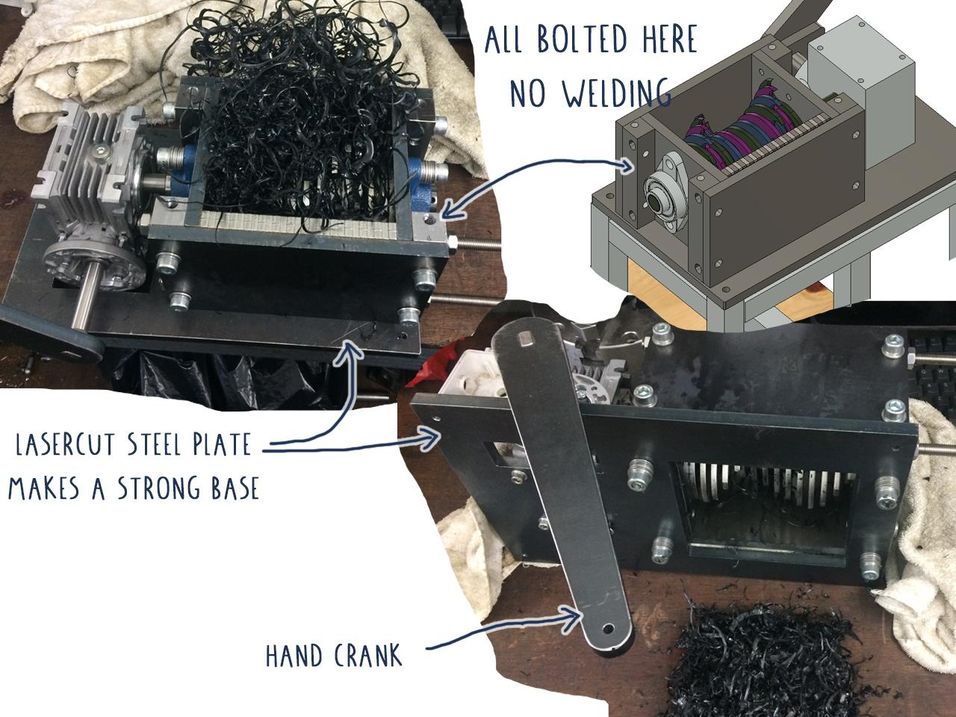
4
Reduce the speed, increase the torque
The key in the shredder performance is to make it turn with high torque. That will allow it to shred thicker plastics (1-3 mm) easily. So what we want to do is reduce the speed we apply to the machine and transform it into torque. There are several techniques for power transmission:
- A gearbox. In a very compact unit, we can reduce the speed in ratios of up to 100:1. Usually they have a wormgear internally, so it will block in case of a clog and it won't back-drive.
- Pulleys and belts. The benefit of these are that they can transmit power but they can also slip, which can be good when there's a clog in the shredder.
- Gears
- Chains and sprockets
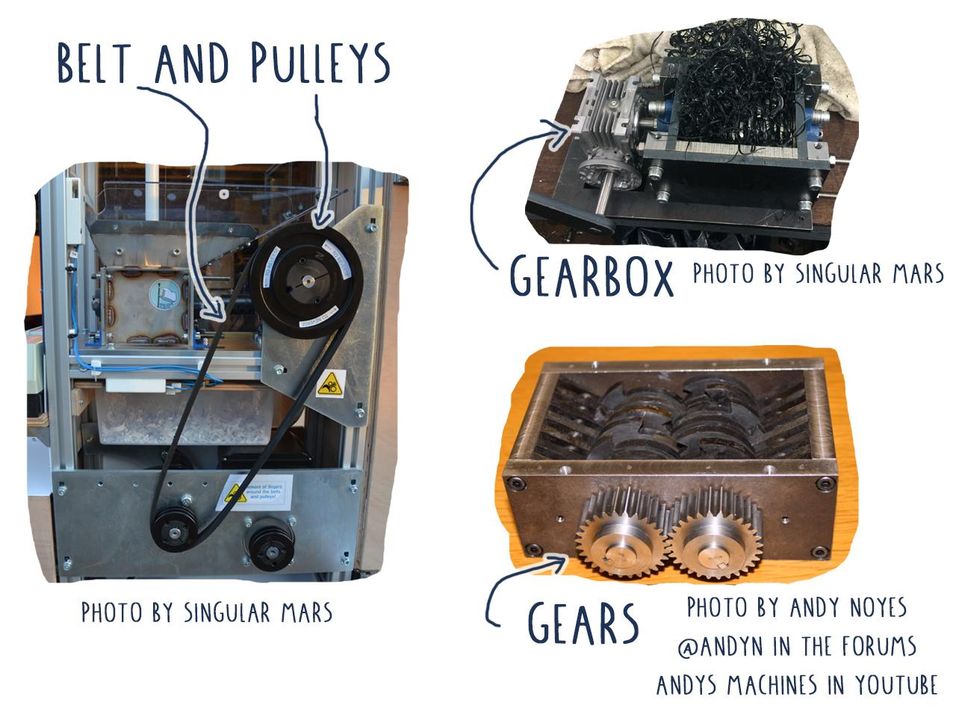
5
I believe I can FLYWHEEL
The magic of the flywheels is that it gives the machine inertia: When it's turning, it keeps the machine moving with little input. Remember to put it on the 'fast' side of your mechanism.
The factors that influence the efficiency of the flywheel is its weight, shape and speed. Usually a disc or wheel works best, a distribution of weight away from the axis helps. The faster it moves, the better it is at mantaining rotation with little effort.
Think of the exercise bike in the picture: the flywheel on the front will keep turning even if you're not pedalling.
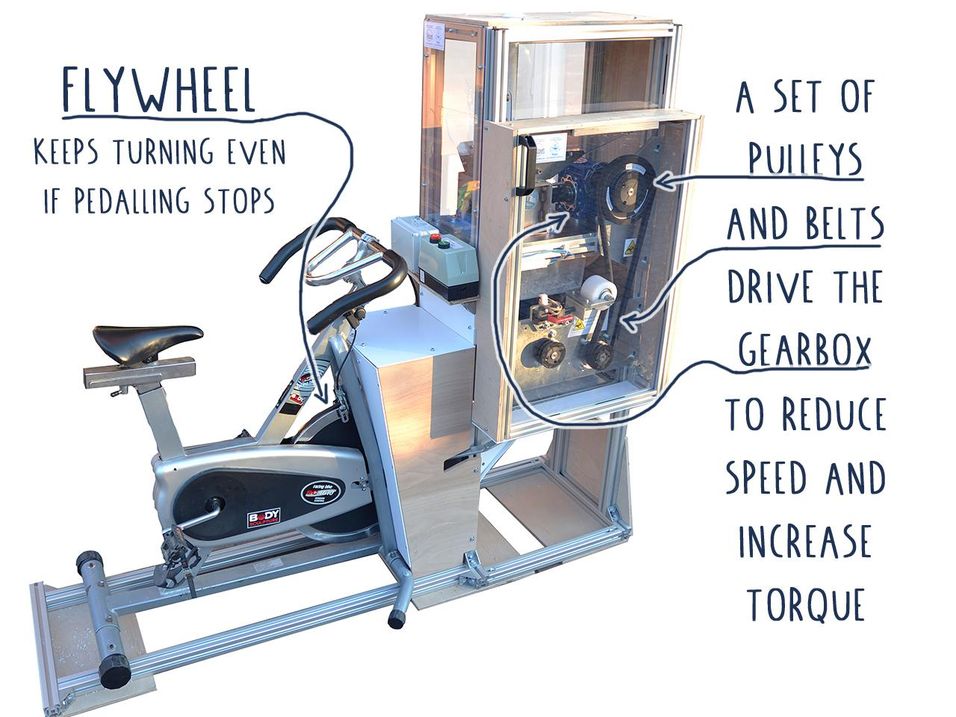


6
Safety first! (and last)
Make sure to incorporate guards and covers so that fingers can't reach any moving parts at any points, minimizing the risks of injury
